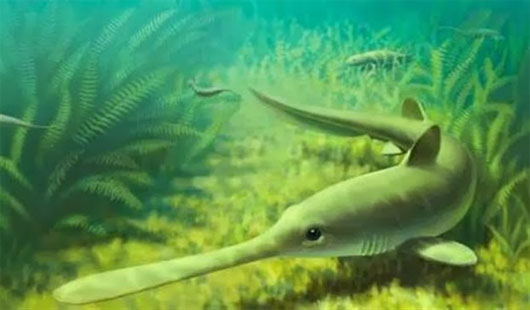Ancient sharks migrate to lay eggs
Paleontologists from the University of Michigan reported gathering fossil evidence more than 300 million years ago, showing long-billed shark shark Bandringa that migrated from freshwater marshes to tropical shores to spawn .

UPI news agency quoted Professor Lauren Sallan that the journey into the sea to reproduce and shark to return to freshwater environment is very rare.
The extinct Bandringa shark , identified by scientists as having a half-body muzzle, is nearly 3 meters. The Bandringa shark genus discovered in 1969 is thought to have two different species, one living in the river, the freshwater marsh and the second species living in the shallow sea. However, when studying more closely 24 fossils found in northern Illinois, two scientists Sallan and Michael Coates at the University of Chicago concluded Bandriga has only one species. They move to different living locations in ways that are adapted to the environment in freshwater, brackish water and saltwater.
At the time of breeding during the year, Bandringa fish moved to the tropical coast to lay eggs while the males were still in freshwater marshes.
- Close up of shark eggs: look like tadpoles that have 'peach hearts' like strange eggs
- Videos of tens of thousands of sharks migrate along the coast of Florida
- Shark eggs also know how to detect enemies
- Catching a 6-bearing shark originating before dinosaurs
- Humans and sharks have the same ancestors
- 370 million-year-old shark fossils discovered
- Should eggs be eaten every day?
- The fiends in the shark world
- 7 ways to eat nutritious eggs without getting bored
- Compare the size of shark species in the world
- How to eat eggs correctly?
- Sharks of their own prehistoric giant eels eat meat of young
 Surprised: Fish that live in the dark ocean still see colors
Surprised: Fish that live in the dark ocean still see colors Japan suddenly caught the creature that caused the earthquake in the legend
Japan suddenly caught the creature that caused the earthquake in the legend A series of gray whale carcasses washed ashore on California's coast
A series of gray whale carcasses washed ashore on California's coast Compare the size of shark species in the world
Compare the size of shark species in the world